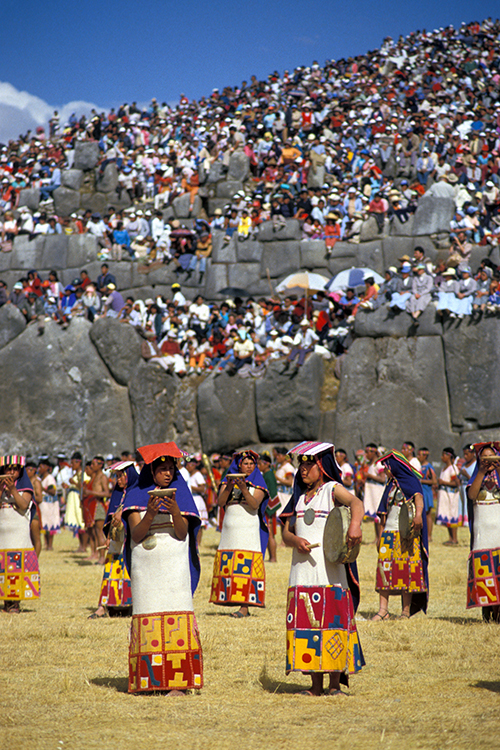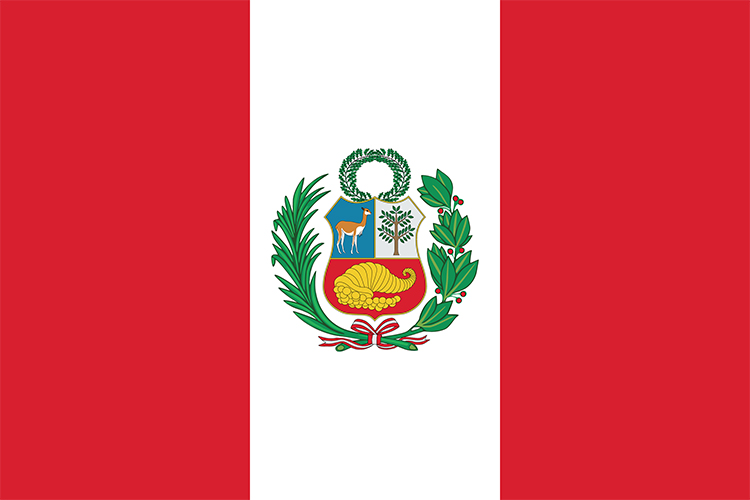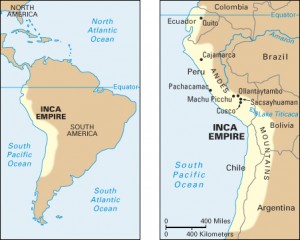The Inca Festival of the Sun
Monday, June 24th, 2019June 24, 2019
Today, June 24, people in Peru celebrate the Fiesta del Sol (Festival of the Sun, or Inti Raymi in Quechua, the ancient language of the Inca). The festival marks the winter solstice in the Southern Hemisphere, and it is considered the most important day on the Inca calendar. The festival celebrates Inti, the Inca sun god, and begins the new Inca year. Inti Raymi celebrations include elaborate dances, the wearing of colorful costumes, and the sharing of traditional food and drink.
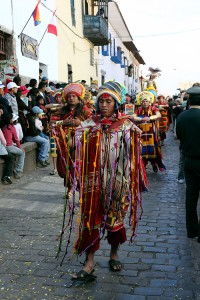
An Inca man displays a colorful quipu, a knotted record-keeping device, during an Inti Raymi procession in Cusco, Peru. Credit: © James Brunker, Alamy Images
The Inca are a native South American people who once ruled one of the largest and richest empires in the Americas. The Inca empire emerged in the early A.D. 1400’s and occupied a vast region centered around the capital of Cusco, in southern Peru. Today, Cusco remains a center of Inca culture, and it hosts the main celebrations for the Festival of the Sun. Nearly half of all Peruvians are descended from the Inca or other indigenous peoples, while another third are mestizos—people of mixed Spanish and Native American heritage.
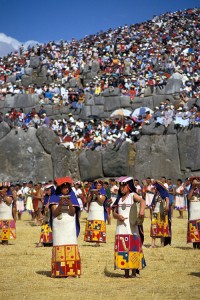
The traditional Inca religious ceremony—the Festival of the Sun, or Inti Raymi—is reenacted at an ancient fortress in Cusco, Peru. Credit: © M. Timothy O’Keefe, Alamy Images
Originally, the Sapa Inca (emperor), nobles, priests, and thousands of devoted worshippers celebrated Inti Raymi at Huacaypata, Cusco’s main square (now called the Plaza de Armas). Ancestral mummies were paraded through the plaza, great numbers of llamas (and sometimes people) were sacrificed, dances and songs were performed, and sacred food and drink were taken. The ceremony was banned after the Spanish arrived in Peru in the 1530′s, but the festival was revived—minus the mass animal sacrifices—in the 1940′s. Today, Inti Raymi draws many thousands of people to Cusco and other Inca sites.
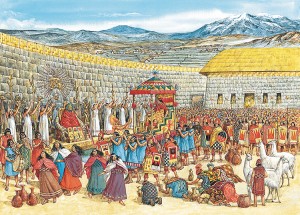
This illustration shows an Inca emperor entering the Temple of the Sun in Cusco, the capital. The chosen women, who prepared food and offerings used in the ceremony, stand near the mummy of a former emperor, left rear. Credit: WORLD BOOK illustration by Richard Hook
June 24 is a busy feriado (holiday) in other parts of Peru, as well. The day marks the birth of San Juan Bautista (Saint John the Baptist), one of the 12 apostles of Jesus Christ. People enjoy the Día de San Juan throughout the Selva (the Amazon region), where San Juan is the patron saint. June 24 is also the Día del Campesino (Day of the Peasant), a holiday once known as Día del Indio (Day of the Indian) that celebrates farm workers as well as Peru’s large indigenous population. For hundreds of years, in the Rímac district of Lima, June 24 was also the Fiesta de Amancaes. Amancaes, or flores de Amancay, are large yellow lilies native to the district, which was once a haven for people looking to escape the city for an afternoon.

